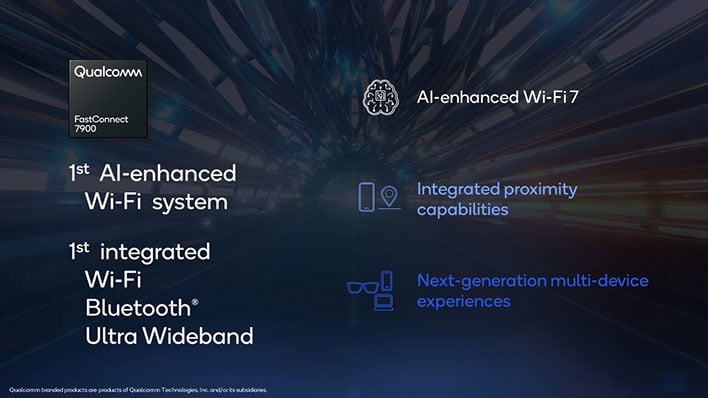
For all the advances that have been made in wireless technologies, at times it still feels like we’re stuck in the stone age of connectivity. However, with the advancements in mobile, 5G and WiFi technologies, that’s beginning to change. At Mobile World Congress, Qualcomm introduced its FastConnect 7900 Mobile Connectivity system, which is an exciting update to the 7800 system it rolled out two years ago. While there are many similarities between the two solutions, there are some key differences that should go a long way toward more seamless wireless experiences in everyday life.

Qualcomm’s latest-generation FastConnect 7900 system offers all the same features while building upon them in important ways, including the inevitable infusion of AI-optimized performance—it’s the first Wi-Fi 7 + Bluetooth (5.4 this time around) to leverage AI. However, the most notable upgrade is the addition of Ultra Wideband (UWB) technology.
UWB is the main upgrade versus the previous generation solution, though it’s also noteworthy that Qualcomm is using a more advanced 6-nanometer manufacturing process to optimize efficiency. Along with all-new RF front-end module (FEM) offerings, Qualcomm is claiming up to a 50% power savings and 50% reduction in physical size, which means longer battery life and potentially slimmer devices.
“FastConnect 7900 is a technological feat, leveraging AI to raise the bar and deliver leading Wi-Fi 7 and Bluetooth capabilities while integrating Ultra Wideband all on a single 6nm chip,” said Javier del Prado, vice president and general manager for mobile connectivity, Qualcomm Technologies, Inc. “Building on the legacy of our first-gen Wi-Fi 7 offering found in millions of devices today, FastConnect 7900 creates a new way to connect. The system brings next-level capabilities across AI, proximity, and multi-device experiences into the devices we love most.”
It’s a promising update for sure, and one that should help UWB become a more ubiquitous technology in mainstream devices (UWB has been around for a long while, but has mainly existed inside the realm of just a handful of consumer gadgets like Apple’s AirTag and Samsung’s Buds Pro 2 earbuds).